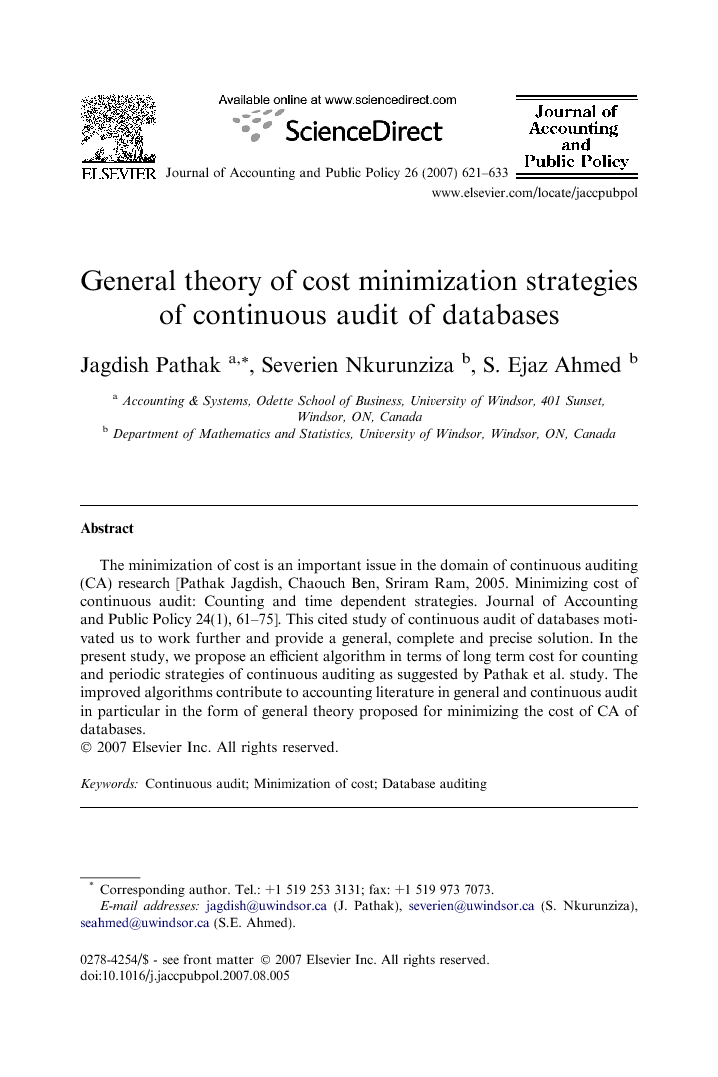ترجمه فارسی عنوان مقاله
نظریه کلی استراتژی های به حداقل رساندن هزینه حسابرسی مستمر پایگاه داده ها
عنوان انگلیسی
General theory of cost minimization strategies of continuous audit of databases
| کد مقاله | سال انتشار | تعداد صفحات مقاله انگلیسی |
|---|---|---|
| 6440 | 2007 | 13 صفحه PDF |
منبع

Publisher : Elsevier - Science Direct (الزویر - ساینس دایرکت)
Journal : Journal of Accounting and Public Policy, Volume 26, Issue 5, September–October 2007, Pages 621–633
ترجمه کلمات کلیدی
حسابرسی مستمر - به حداقل رساندن هزینه - - حسابرسی پایگاه داده ها -
کلمات کلیدی انگلیسی
Continuous audit,
Minimization of cost,
Database auditing,

